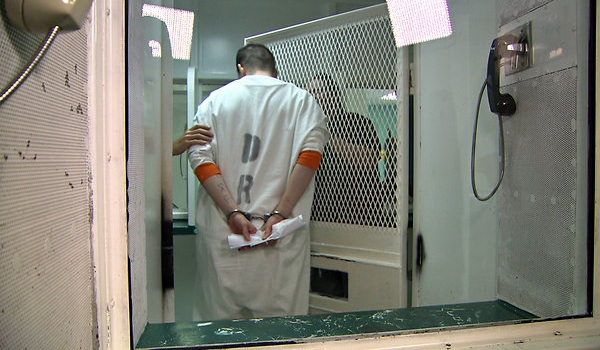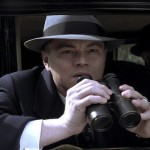Into the Abyss

Into the Abyss, the second and better of two 2011 documentaries (after Cave of Forgotten Dreams) directed by Werner Herzog, is a modern-day version of In Cold Blood. It’s a very thoroughly researched true-crime story, but it’s a little dry and tends to drift off point. Is this a detailed retelling of a horrific triple homicide or a death penalty polemic? There’s no doubt Herzog’s film deals with both of these, but the latter is touched on ever so briefly—almost superficially. He remarks to one of his subjects that he does not like him, but he does respect him because he’s a human, and human life should be respected. Besides that, there’s a discussion with one of the victims’ family members about what they felt post-lethal injection. It’s a tricky subject to broach, of course, but nothing surprising or especially thought-provoking comes of it.
The crimes outlined in the film were committed by teenagers—Michael Perry and Jason Burkett of Conroe, Texas. About a decade before Into the Abyss was filmed, the duo attempted to steal a red Camaro from the garage of Sandra Stotler, a 50-year-old mother and nurse. Complications ensued, and Sandra was murdered. Burkett and Perry dumped the body in a nearby lake and later, they killed Stotler’s 16-year-old son, Adam, as well as Adam’s friend, Jeremy Richardson.
Both men, now ten years older, maintain personal innocence. Michael, who has been sentenced to death and is being interviewed by Herzog for the film just eight days before his death, blames the crimes on Jason, who has received a life sentence in prison and blames it all on Michael. Along with interviews with these two men, Herzog speaks with Sandra Stotler’s daughter, Burkett’s father (also in prison for life), Burkett’s wife (whom he met while in prison), and Richardson’s brother.
Herzog’s recreation of the crime is meticulous, and hearing from all parties involved helps paint a very vivid picture of what happened those years ago. He rides around the crime scenes, some of which are absolutely frightening, with one of Conroe’s investigators to help us place exactly where something like this could happen. What I found even more interesting was Herzog’s conversation with another Conroe man, who seems to perfectly represent Conroe. During an altercation, he’s stabbed under the arm with a foot-long screwdriver. This is all great stuff. It’s nothing revelatory, but it’s pretty mesmerizing.
There comes a point, unfortunately, when it feels like Herzog is spinning his wheels. Not to make light of the pain these family members have been and continue to go through, but I had a hard time listening to Perry, Burkett, and the latter’s family members talk about how they were done wrong. Having been convicted of such sick crimes, I don’t really feel any sympathy toward either, despite being against the death penalty, personally. And sympathy doesn’t necessarily need to accompany a discussion like this, but you run the risk of making your film too cold. That’s Into the Abyss in a nutshell.
I said earlier that Into the Abyss, despite its flaws, is a wholly better documentary than Cave of Forgotten Dreams, but I think the two have a lot in common, as far as those flaws go. Cave of Forgotten Dreams, like Into the Abyss, is hypnotizing in parts. The former, however, is about 1/3 tremendous and 2/3 tepid. Into the Abyss reverses those ratios. Herzog is a great documentarian (and a tremendous fiction filmmaker, as well), but neither of his 2011 films quite hits the mark. Both are worthy of a watch, but neither is a home run. Should you opt for watching just one, however, go with Into the Abyss.













